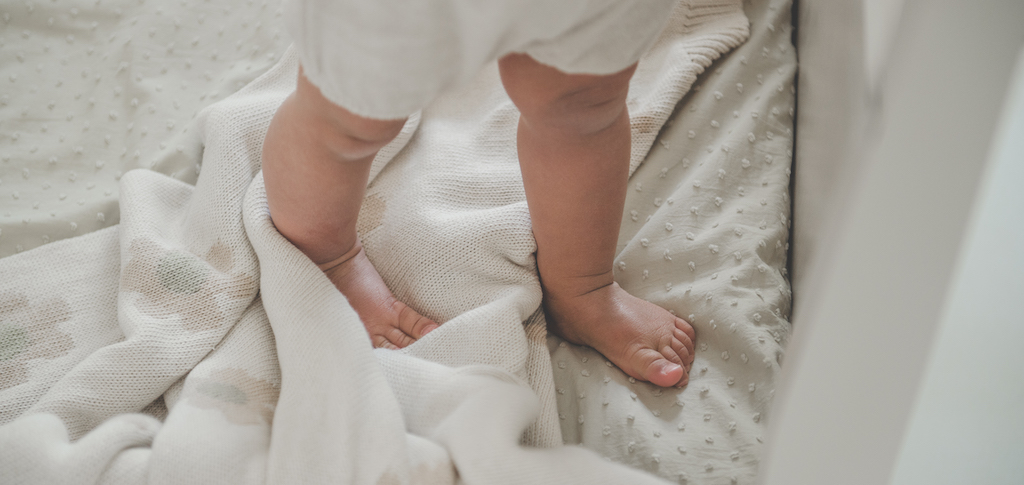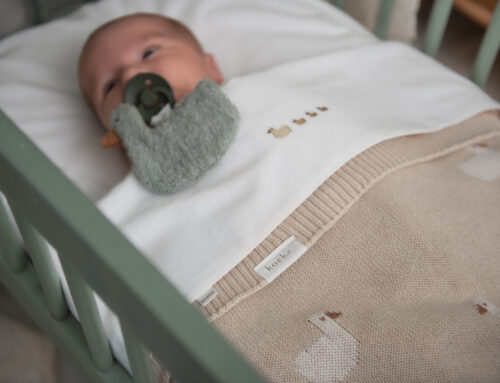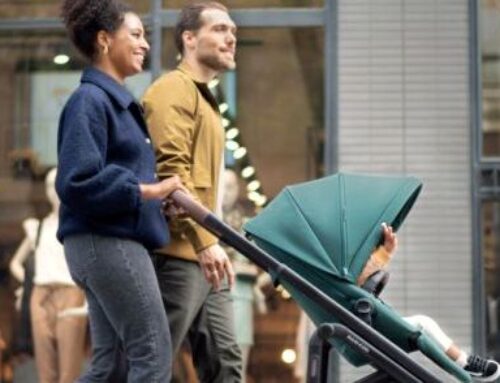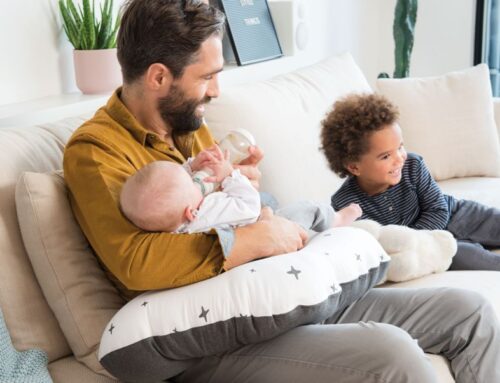Sustainable and circular textiles are becoming the standard, and fast fashion is ‘out’. There will be a lot of changes for the Textile product group next year. As a result of the EU Green Deal, textile producers will be responsible for the collection, recycling and waste disposal and therefore have to pay a waste disposal fee.
New directive: Extended Producers Responsibility for Textiles
In this article, we not only look at material choice and designs but also at the new ‘Uitgebreide Producenten Verantwoordelijkheid Textiel’ (UPV) [Extended Producers Responsibility for Textiles] that will become legally compulsory as of 1 January 2023 and the collective interpretation for its implementation, the so-called Producers Organisation (PRO). Complicated matters, therefore, require further explanation because we hear from the market that this regulation is new to many parties. What does this new directive mean? We ask expert Miriam Geelhoed, Senior Consultant at Modint, the sector organisation for Fashion, Interior Design, Carpets and Textiles.
How come manufacturers and producers are not all aware of the new UPV?
Miriam Geelhoed: ‘We keep our members well informed, and it is regularly in the news. But I am surprised that not all companies read up on the developments that are coming. We see that SMEs do not always have a long-term strategy.’ She continues: ‘Entrepreneurs must realize that corporate responsibility will become a precondition for their continued existence in 10 years’ time. It’s not just about the consumer asking things of you, but there are so many forces around us that want to push us in a different direction from the traditional ‘pull and push’ model.’ She points to large platforms that increasingly opt for drop-shipment, where the responsibility lies not only with the platform but with the brands themselves.
What do you think entrepreneurs struggle with?
Miriam: ‘With the amount of change that is coming to our sector and how they are going to do it. Our step-by-step plan can help. Large companies will consult a specialist, but small business owners need to understand that it is not just about nice, new models and trendy colours, but that the products must also be safe and responsible. In addition to finding the right shade of pink, for example, the risks of the chain in question, such as child labour or environmental pollution, must be considered. Consumers must be able to count on a responsible product. This must become the standard. The Due Diligence Act, based on the OECD guidelines, is going to become important with the aim of combating violations of human rights, labour rights and the environment. These are important steps that you need to know and take as a company.’ And so we come to the fact that purchasers also have to think about the requirements they will place on producers. Why do new models and colours have to be launched so often, putting delivery times and prices under pressure? That is certainly food for thought.
Does the UPV apply only to producers? What about importers?
‘The UPV applies to producers and importers,’ Miriam replies. An example: if I import 10,000 shirts into the Dutch market, I have to pay a levy. If I export 6,000 shirts to Germany for resale, I have to ask for compensation for 6,000 shirts. How this will work out in practice is not yet concrete. The idea is that whoever imports it first should pay. If you sell it to a customer in the Netherlands, who then sells it on to a company in Germany, you cannot apply for compensation.’
When exactly does the UPV come into effect?
Miriam: ‘The government wants the UPV to come into force formally on 1 January 2023. But setting up a good collective system takes time. Therefore, a transition period is agreed upon. As a company, you do have individual responsibility, but you do not have to report on the concrete implementation and results until 2025. Furthermore, a producers’ organisation will be set up that will be responsible for a collection system but also for budgets for innovations that will stimulate reuse. The UPV goes hand in hand with the government’s objective of high-quality recycling and reuse of textiles. By 2030, the use of primary raw materials must be halved, and by 2050 the economy must be fully circular. Think of it this way: a disposal fee is charged, but at the same time, money is freed up for innovations to scale up. This is necessary because we cannot do it now.’
How will compliance with the UPV be monitored?
‘Companies will soon be responsible for reporting. It is a payment that will soon be seen on the receipt, where a registration also takes place. It is similar to the disposal fee you have to pay for mattresses, which by the way, have their own UPV. I assume that it will also be enforced. We also draw attention to the Consumer Imports Directive. You can already see that large platforms such as Amazon and AliExpress are preparing for this with a European or Dutch address. In addition, these parties also lobby heavily, which should not be underestimated,’ according to Miriam.
Consumers also order outside European borders; how do you see that?
‘In our lobby, we emphasize the importance of enforcement of the rules. In practice, this is difficult, but there is also an appeal to the platforms where these products are offered. They must, of course, screen their manufacturers. You can see that Amazon also removes things from the site. And of course, the Netherlands Food and Consumer Product Safety Authority [NVWA] checks on product safety.’
We are in a market where many products are already reused and passed on. Are we not a separate player when it comes to baby and children’s textiles?
‘Is that so?’, Miriam asks. I think your market has a lot of potential, but I don’t know any figures on the scale on which that actually happens. Children grow quickly, and therefore the useful life of a product is not very long. I do see good examples in your market of being able to hand in baby and children’s clothes for reuse. I think various baby and children’s products are very suitable for leasing and refurbishing.’
What will this scheme mean in concrete terms for entrepreneurs?
‘There will definitely be some administration. The disposal fee has to be processed, but entrepreneurs keep track of what they buy anyway. Any company with a software system should be able to implement this fairly easily. It becomes more difficult if you are not automated. But there will also be parties who can help companies with this.’
What steps can entrepreneurs take now?
‘There are several possibilities,’ Miriam replies. You can get ahead of it and take care of things yourself, for example, by making contact with textile processors and recycling companies. But you can also wait until it is settled. It also depends on your position in the chain and whether you want to have control over large flows of ‘post-consumer’ textiles. If that is the case, then it is wise to take action yourself.’ She continues: ‘Textiles should be easy to collect and high quality to recycle, but there is a lot involved in this. It should be investigated what material it is made of, how parts are connected, whether there are metals in it…. This means talking to many parties and recycling companies. In any case, it should be made as easy as possible for consumers to return textiles. In the Netherlands, the clothes bins often fill up quickly, and a lot of rubbish is dumped in them. Yes, there are still a lot of problems, and that is also because we do not have the capacity to fiberize. At the international level, it must be agreed that clothing is not seen as waste but as an import for new fibres in terms of import taxes. And there are already companies like Lenzing, which make new materials like Lyocell based on ‘post consumer’ cotton.’
UPV, what is that?
UPV stands for Extended Producer Responsibility (EPR). In short, this means that producers and importers of textiles will be responsible for the collection, sorting, recycling, reuse and processing of waste from products placed on the Dutch market. For a collective implementation of the responsibility, the companies concerned can join a Producers’ Organisation (PRO). Currently, this responsibility still lies with municipalities; they will relinquish responsibility for separate collection to producers. There will eventually be a levy based on the number of items and weight classes.
Why has a UPV been created?
The clothing industry is one of the most polluting industries. In fact, it releases more CO2 than international air and sea transport combined. The Dutch government and the textile industry want to change this, and they are very ambitious. Former State Secretary Van Veldhoven of Infrastructure & Water Management initiated the introduction of the UPV for textiles in 2023. This UPV will be the flywheel to encourage the reuse and recycling of old clothes. Big polluters have to pay, and consumers get more sustainable clothing. As producers become responsible and bear the costs of waste management, a higher quality of clothing is expected. The UPV for textiles was also created by the trade organisations INretail and Modint.








